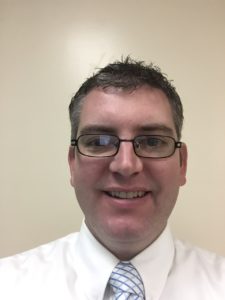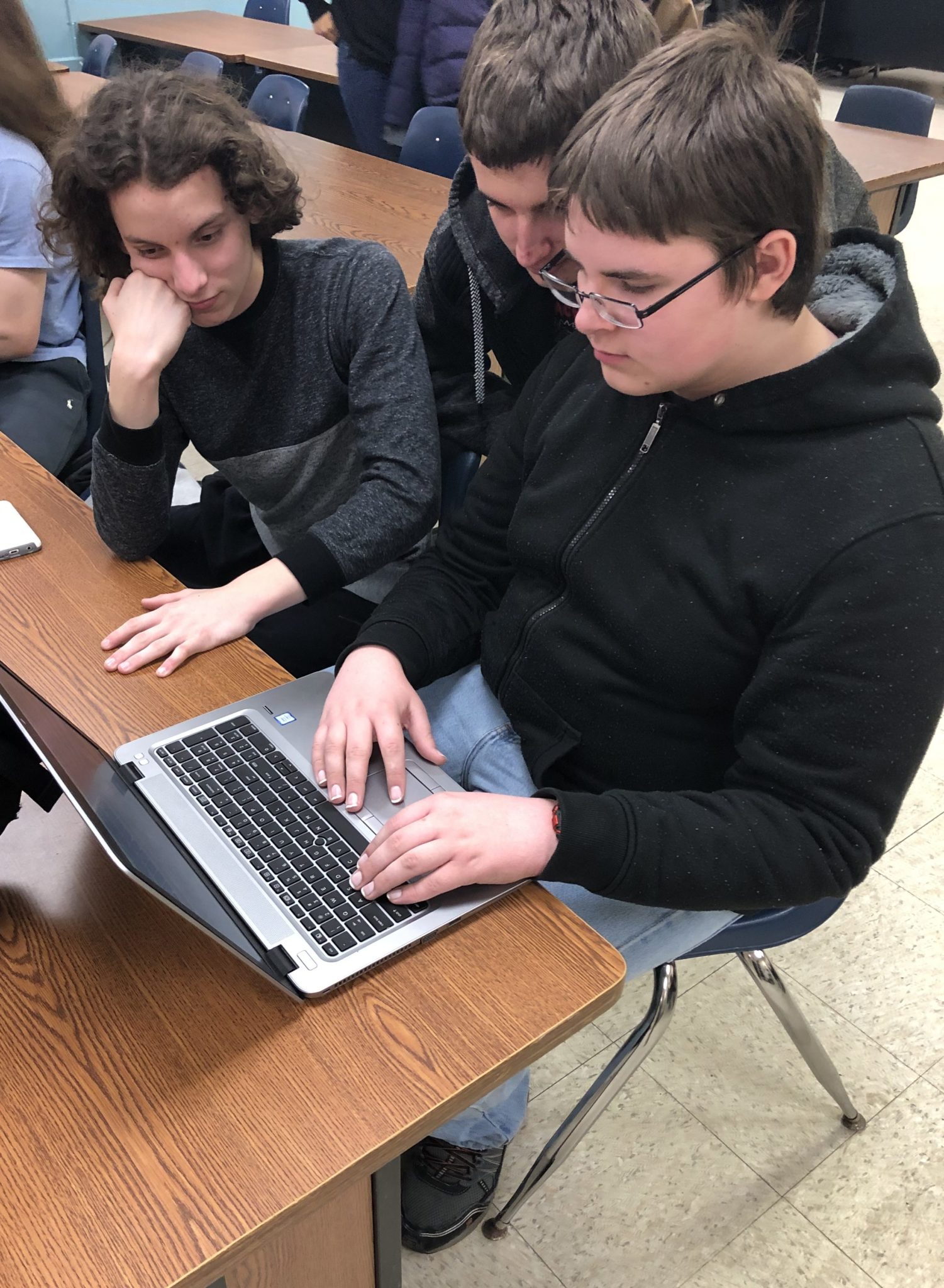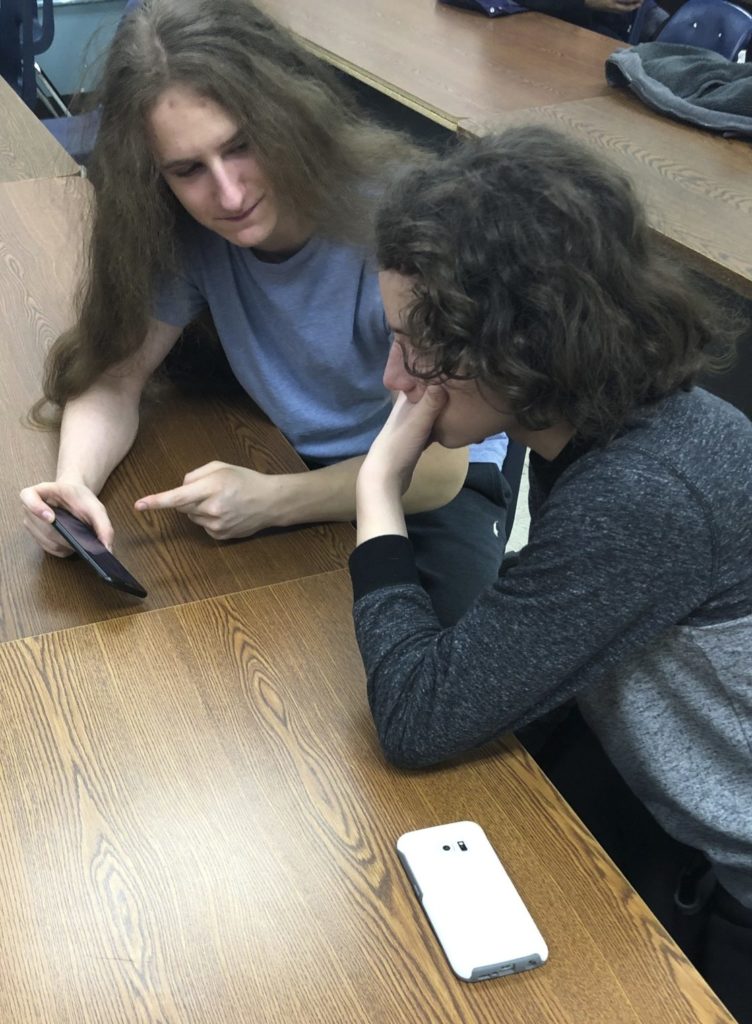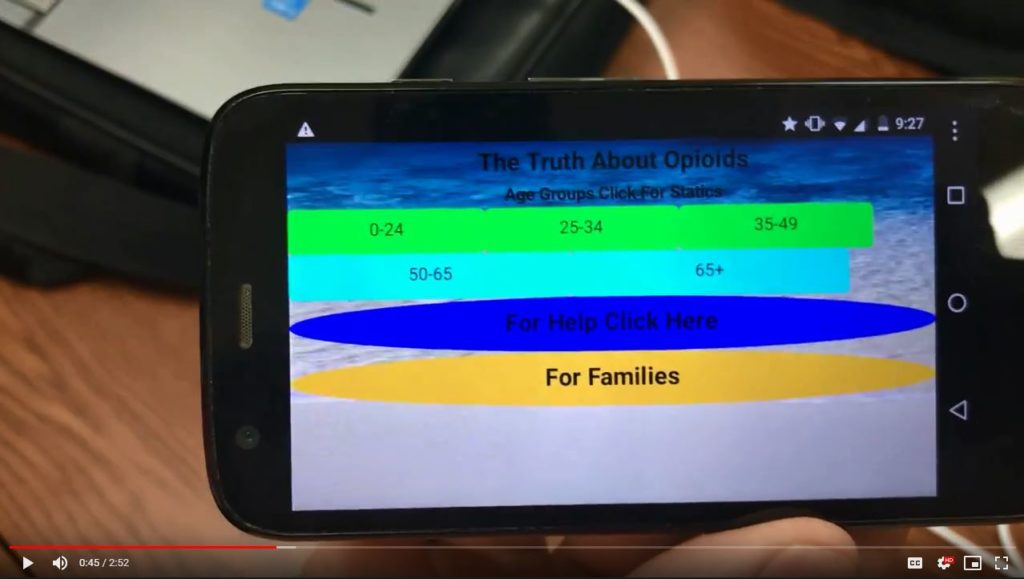Since 2015, the U.S. House of Representatives has staged an annual district by district computer science, or “app,” competition for students. The aim of the Congressional App Challenge is to foster an appreciation for computer science and STEM in schools. One Ohio congressman, Rep. Tim Ryan, co-chaired the competition in 2017, and one school has won twice in his district in northeastern Ohio. Teams from the National Inventors Hall of Fame STEM High School in Akron created the two winning apps. The teams were led by Sam Appleby, software engineering and robotics coach at the school. So what goes into creating a winning app? We asked Appleby to share his “secrets.”
Q: Tell us about your professional background and your current role at the National Inventors Hall of Fame STEM School?
 A: This is my 13th year in education, all of which I have worked for Akron Public Schools. I spent the first nine years at Garfield High School and am now in my fourth year at the National Inventors Hall of Fame STEM High School in Akron. I am a Career Pathway Teacher, and my pathway is software engineering and robotics. I am also the coach of our Competition VEX Robotics Team in the building. We currently have three teams qualified for state competition in March and one team qualified for world competition in April.
A: This is my 13th year in education, all of which I have worked for Akron Public Schools. I spent the first nine years at Garfield High School and am now in my fourth year at the National Inventors Hall of Fame STEM High School in Akron. I am a Career Pathway Teacher, and my pathway is software engineering and robotics. I am also the coach of our Competition VEX Robotics Team in the building. We currently have three teams qualified for state competition in March and one team qualified for world competition in April.
Q: Now tell us about the Congressional App Challenge: What is it, and why did you decide to participate?
A: The Congressional App Challenge is a competition that was started in 2015 to help foster interest in STEM related fields and topics among students. I have taught Project Lead the Way’s Computer Science Principles course for the past three years. Part of that course involves app development. At STEM High School, we try to provide our learners with as many opportunities as possible, so when reading about the competition it sounded like a great thing to get the students involved in. Each year I put together a PBL, or problem based learning scenario, which the learners must base their app idea on; other than that, they have complete artistic freedom.
We have entered the challenge the past two years and been announced as district winners for both. Last year, our problem-based learning scenario was the opioid addiction issue in northeastern Ohio, and this year it was school safety.
Q: Tell us more about the winning apps and how you and the students created them?
A: Last year, the winning app was “The Truth About Opioids,” and it provides information to deter opioid use, information on area rehab centers and information for families with members experiencing addition issues.
This year, the app was “ASC, Anonymous Security Center.” This app focused on the emotional safety of students and is designed to deter bullying. The app gives students a way to report emotional or other safety issues to staff members in a secure place. The students use MIT App Inventor to create their apps.
 |
 |
Q: What did you hope your students would learn from making the apps?
A: All of our PBLs focus on having students create things using the design process. We stress Frontier Habits to make a successful learner and person at STEM High School. Frontier Habits include tenacity, collaboration, creative thinking, problem solving and self-direction.
Completing PBLs gives the learners the job skills necessary for life after high school, and that is what I always desire from any assignment we take on.
The winning group receives $500 to be used in the Amazon Web Services store, their app will be featured on the house.gov site, and they are invited to the House of Code celebration in Washington, D.C., in April along with the other App Challenge winners.
Q: Why do you think your students have been so successful in this contest? What would you advise other teachers or student groups who would like to enter?
A: I think the learners have been successful because we try to tie their submissions to solving a problem within the community. This really helps student buy in and connects them to the project.
My advice to other teachers would be to try to submit regardless of what you think they might come up with. All of the groups that submit make a presentation to a panel of our community partners upon completion. All of the groups are better off after making their presentation. Some apps are very basic, and some are outstanding, but all of the learners gain a great deal of experience to help them down the road.
Q: Is there anything else you can share about this project?
A: I would like to applaud U.S. Rep. Tim Ryan and his office. They are extremely supportive of this venture. After we won last year, Rep. Ryan visited the school and the winning students. His visit was very genuine and had a lasting impression on those students.
An exciting day! @RepTimRyan visited to congratulate Nathan Dort and Robert Frazier for winning the @CongressionalAC. @OSLN_AkronHub pic.twitter.com/WUp7DRI2Kj
— NIHF STEM HS (@NIHFHS) February 5, 2018
Whenever people from the community come out to show interest in what students are doing, it has a much larger effect than what they might realize.
Check out the winning student-designed apps
The Truth About Opioids
Anonymous Security Center

